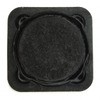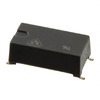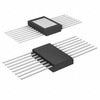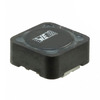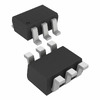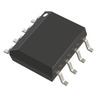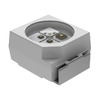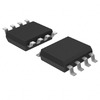Lumens vs. Watts: The New Metric for Choosing Light Bulbs
In the world of LED lighting, understanding the relationship between lumens and watts can help consumers make informed decisions when purchasing light bulbs. Lumens measure the brightness of light emitted by a bulb, directly correlating to the effectiveness of lighting in any given space. Unlike lumens, watts indicate the amount of energy consumed by the bulb, which historically helped gauge the brightness due to the commonality of incandescent bulbs. However, with the advancement of energy-efficient lighting technologies such as CFLs and LEDs, this traditional metric has become less indicative of actual light output. This evolution necessitates a deeper dive into why lumens have become the preferred measure of light output in modern lighting solutions, illustrating the shift from energy consumption considerations to efficiency and brightness in consumer preferences.Catalog

Figure 1: Light Bulb
Lumens and Watts in LED Lighting
What Is Lumens?
In the world of LED lighting, lumens measure the brightness of the light emitted. Unlike watts, which indicate the energy consumed, lumens focus solely on the output of light. The higher the lumens, the brighter the light. For example, a standard 60-watt incandescent bulb emits about 800 lumens. Lumens provide a more intuitive and accurate measure for assessing the brightness of bulbs instead of relying on wattage.

Figure 2: Lumens
What Is Watts?
Watts measure energy consumption and have no direct correlation with the brightness or total output of light. They indicate the amount of electricity a device uses. For instance, a 100-watt bulb uses 100 watts of power, whereas a 60-watt bulb uses 60 watts. With the advancement of energy-saving technologies like CFL and LED bulbs, the link between wattage and brightness has shifted. Traditionally, the brightness of a bulb was measured in watts, as years of using 60-watt incandescent bulbs associated specific brightness levels with specific wattages. However, with the introduction of energy-efficient bulbs like CFLs and LEDs, wattage is no longer a reliable indicator of brightness. Today, consumers focus more on a bulb's lumen output rather than its wattage because LED technology can deliver more brightness with fewer watts.
The Distinction between Watts and Lumens
The distinction between watts and lumens lies in that watts indicate electrical energy consumption, showing how much power a bulb uses, but do not reflect its brightness directly. Traditional incandescent bulbs typically produce about 10 to 17 lumens per watt, while modern CFL and LED bulbs provide higher lumens at lower wattages. Thus, wattage is no longer the main standard for measuring bulb brightness. Lumens measure the visible light output of a light source, regardless of the type of bulb, allowing consumers to more accurately assess the brightness of different types of bulbs. Understanding the relationship between lumens and watts helps consumers scientifically select lighting fixtures to meet the specific lighting needs of a space while achieving both energy savings and cost-effectiveness. Lumens not only offer a unified standard for measuring brightness but also make the comparison of brightness across different light sources more straightforward and reliable, which is particularly important in modern lighting design.
Why Are LED Lights Measured in Lumens?
In today’s lighting market, consumers prioritize brightness over energy consumption when purchasing bulbs. Traditionally, brightness was gauged by wattage—the higher the watts, the brighter the bulb. However, as energy-saving technologies have evolved, this method has become less applicable, particularly with the advent of LED bulbs. LEDs can provide greater brightness with less energy, making lumens the preferred measure of light output—that is, the higher the lumen number, the brighter the bulb.

Figure 3: Lumens of Different Bulbs
Lumens, which measure light flux, directly quantify the amount of light a source emits, independent of energy use. This detachment from power consumption makes lumens a more scientific and precise way to evaluate light brightness. Consumers can consult lumens charts for LEDs to accurately determine the amount of light needed for each space, making it easier to select the appropriate bulb. These charts often offer recommendations based on a room's function and size. For instance, a typical living room may need 20-30 lumens per square foot, while a workspace might require 50-75 lumens per square foot. This information helps consumers select the right bulb type and quantity to adequately illuminate specific areas according to their actual lighting needs.
Another advantage of using lumens as a measurement standard is its universality. Whether dealing with incandescent, fluorescent, or LED lights, lumens provide a uniform brightness unit, allowing for more straightforward and reliable comparisons across different light sources. Consumers no longer need to navigate complex conversions to compare the brightness of various bulb types, they simply focus on lumens for an easier selection process.
For LED bulbs, the significance of lumens also lies in their efficiency. Traditional incandescent bulbs typically produce about 10-17 lumens per watt, whereas LEDs can achieve 80-100 lumens per watt or even more. This means that LEDs can deliver several times the brightness of incandescent bulbs at the same wattage. In practical terms, this high efficiency not only helps save energy but also reduces electricity costs, providing a more environmentally friendly lighting solution.
Overall, measuring bulb brightness in lumens reflects the trends in lighting technology. It allows consumers to make more accurate choices in lighting equipment, furthering the adoption and application of energy-saving technologies. By focusing on lumens rather than watts, consumers can better meet the lighting needs of different spaces, improve lighting quality, and achieve goals of energy efficiency and environmental sustainability.

Figure 4: The Higher the Lumen Number, the Brighter the Bulb
How to Convert Lumen to Watts in LED Lights?
When you're considering replacing old light bulbs with new energy-efficient LED light bulbs, you'll want to know ahead of time how to convert lumens to watts.
A common question is: How many lumens does a 60-watt LED bulb produce?
Traditional bulbs, such as incandescent, typically have an efficiency of about 15 lumens per watt. Modern LED bulbs, on the other hand, can provide between 70 and 100 lumens per watt. This makes LEDs five to six times more efficient than old incandescent bulbs. To replace an old incandescent bulb with a modern LED, you would use a ratio of about 5:1 or 6:1.
For instance, if you need to replace a 60-watt traditional bulb with an LED, you first need to understand the lumens it produces—typically, 700 to 800 lumens. To find the equivalent LED wattage, divide the traditional bulb’s wattage by 5 or 6. So, replacing a 60-watt bulb would mean using an LED that consumes approximately 12 watts. If you aim to replace a 60-watt incandescent bulb, choose an LED bulb that provides around 800 lumens.
It’s important to note that because lumens measure brightness and watts measure energy consumption, converting watts directly to lumens isn't straightforward. The lumens output of a 60-watt bulb depends on its efficiency in lumens per watt, not its energy consumption.
How many lumens do you need for different spaces?
Each room has its requirements for lumens per square foot. For kitchens, 60-80 lumens per square foot are recommended. Dining areas generally need 30-40 lumens per square foot. Living rooms should have 40-50 lumens per square foot, while bedrooms and studies/offices might require 30-40 lumens and 60-80 lumens per square foot, respectively. For bathrooms, depending on your preference, 50-80 lumens per square foot would be adequate, and for garages, 60-80 lumens per square foot work effectively.
For more inspiration on bathroom lighting and decor, check out this guide on how to create a minimalist bathroom.
Comparative Analysis of Optical Power and Luminous Flux
Comparing the light power and lumen output of various light sources offers a comprehensive view of their energy efficiency and practical applications. Ideally, a light source would convert all its energy into light; however, in reality, some of the energy is transformed into heat, leading to significant efficiency differences among light sources. These variations affect their performance and energy consumption levels.
Incandescent bulbs, though traditional and not very energy-efficient, continue to be widely used due to their low cost and the natural, soft quality of the light they emit. A 100-watt incandescent bulb, for example, can deliver about 1600 lumens. This equates to roughly 16 lumens per watt. A significant amount of energy in these bulbs is converted into heat, making them less energy-efficient and quite hot during operation.
In contrast, LED bulbs, known for their high energy efficiency and longevity, have become the dominant choice in modern lighting. An LED bulb that also provides 1600 lumens of light only requires about 14 to 17 watts of power, which means its efficiency ranges from 94 to 114 lumens per watt—substantially higher than that of incandescent bulbs. This high efficiency not only reduces energy consumption but also decreases the amount of heat the bulb generates, enhancing safety during use.
Advancements in the design and manufacturing technologies of LED bulbs have enabled them to provide higher light outputs at even lower energy consumption. For instance, optimizing the structure of LED chips and improving light extraction efficiency have pushed the efficiency of modern LED bulbs to as much as 150 lumens per watt or more. Although fluorescent bulbs are more efficient than incandescent ones, they still fall short of LED efficiency and contain harmful substances like mercury, posing environmental risks if not disposed of properly.
Therefore, when selecting lighting equipment, comparing the lumens and watts of different light sources allows for more informed decision-making. Energy-efficient LED bulbs not only offer substantial advantages in terms of energy consumption but also outperform traditional incandescent and fluorescent bulbs in terms of light quality, lifespan, and environmental impact. Choosing the right LED bulb can meet daily lighting needs while significantly reducing energy use and carbon emissions, contributing to environmental conservation.
Energy Savings and Cost Analysis of Switching from Incandescent to LED Bulbs
As LED technology has become more prevalent, the price of LED bulbs has gradually decreased, offering a variety of light colors to easily meet consumer needs. Compared to traditional incandescent bulbs, LEDs have significant advantages in energy savings and cost-effectiveness.
Energy Consumption Comparison: Consider a 100-watt incandescent bulb that operates for 8 hours daily. This bulb consumes about 24 kilowatt-hours (kWh) per month. At a rate of $0.15 per kWh, the monthly cost is approximately $3.60. In contrast, a 15-watt LED bulb under the same conditions consumes only 3.6 kWh per month, costing about $0.54. This results in a monthly savings of about $3.06 on your electricity bill.
Cost Recovery: Although LEDs have a slightly higher initial cost, their energy efficiency pays off quickly, usually within 1 to 2 months, through significant savings on your electricity bills.
Longevity and Maintenance: LED bulbs last much longer than incandescent bulbs, typically between 15,000 to 25,000 hours compared to about 1,000 hours for incandescents. This extended lifespan means that LEDs need to be replaced far less frequently, further reducing maintenance and replacement costs. Over time, using LEDs significantly lowers total ownership costs and lessens environmental impact.
Efficiency in Energy Use: Incandescent bulbs produce light by heating a filament, losing most of their energy as heat, which makes them highly inefficient. LEDs, on the other hand, generate light through light-emitting diodes with minimal heat loss, achieving greater energy efficiency. Typically, LEDs produce 70 to 100 lumens per watt, while incandescents only achieve 10 to 17 lumens per watt. This higher efficiency means that LEDs consume less power for the same level of brightness, offering greater energy savings.
Versatility in Color Temperature: LEDs provide a range of color temperatures from warm whites, similar to incandescent lighting, to cool whites, which are ideal for different settings. Whether for residential, commercial, or specialized lighting needs, LEDs can meet diverse environmental lighting requirements. The variety in color temperature not only enhances visual comfort but also improves efficiency in living and working environments by optimizing lighting conditions.
In conclusion, replacing incandescent bulbs with LED bulbs offers clear benefits in terms of energy savings and cost. By selecting the right LED bulbs, consumers can significantly reduce electricity expenses and decrease the frequency of bulb replacements and maintenance costs. In the context of today's energy resource constraints, promoting the use of efficient LED lighting technology aligns with economic benefits and contributes positively to environmental protection. As technology continues to advance, the performance and pricing of LED bulbs will further improve, providing an economical and efficient lighting solution for an increasing number of consumers.
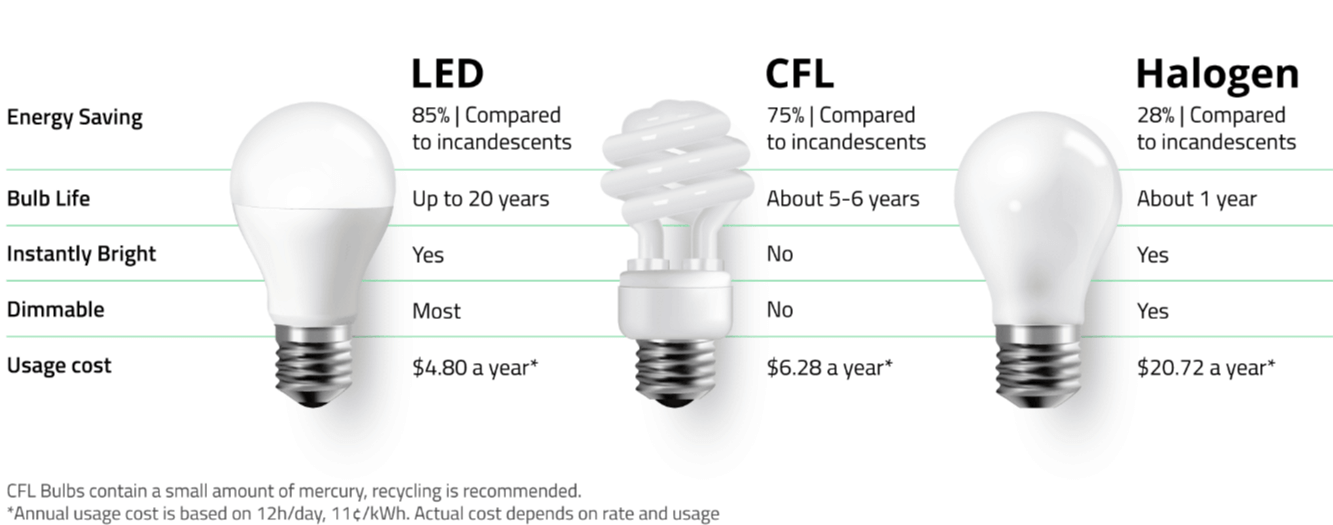
Figure 5: Light Bulbs Comparison Chart
How to Read Light Bulb Labels?
As lighting technology evolves, the information on light bulb labels has become increasingly detailed. When selecting bulbs, consumers should read these labels carefully to make the most informed choices. Modern bulb labels not only provide basic brightness information but also details about estimated annual costs, lifespan, light appearance, and energy consumption.

Figure 6: Light Bulb Labels
For instance, a bulb rated at 1100 lumens offers brightness comparable to a traditional 75-watt incandescent bulb, while one rated at 820 lumens corresponds to a 60-watt incandescent bulb. This labeling helps consumers visually understand the brightness performance of bulbs and choose the right product based on their specific needs.
Brightness of Light Bulb: The first thing to check on a bulb label is the brightness, measured in lumens. Unlike the traditional method that used watts, lumens give a more accurate reflection of a bulb’s light output. By comparing the lumen values of different bulbs, it’s easy to determine which offers more brightness. With the support of energy-saving technology, modern LED bulbs can deliver higher lumens at lower wattages, allowing for reduced energy use while maintaining or enhancing brightness.
Estimated Annual Cost: Another crucial piece of information is the estimated annual cost, which is usually calculated based on average usage and electricity rates. Knowing how much a bulb costs to operate annually helps consumers gauge the long-term cost of different bulbs, leading to a choice that is both economical and practical. Although LED bulbs may have a higher initial cost, their lower energy requirements and longer lifespan generally mean they are less expensive over time compared to traditional incandescent bulbs.
Lifespan: The lifespan of a bulb, typically expressed in hours, indicates how long the bulb is expected to function under ideal conditions. A longer lifespan means fewer replacements and lower maintenance costs. Modern LED bulbs often last over 15,000 hours, significantly longer than the roughly 1,000 hours expected from traditional incandescent bulbs. Opting for longer-lasting bulbs not only saves replacement costs but also reduces environmental impact.
Light Appearance: Also known as color temperature, light appearance describes the color of the light emitted by the bulb, measured in Kelvin (K). Light with a color temperature between 2700K and 3000K is often called "warm white" and resembles the light from incandescent bulbs, suitable for home environments. Light in the 3500K to 4100K range is called "cool white," better for office and commercial settings. Above 5000K, light is referred to as "daylight," offering a very bright white light, ideal for high-brightness work environments. Choosing the right color temperature can enhance the comfort and functionality of lighting.
Energy Consumption of Light Bulb: The final key information on a bulb label is energy consumption, typically listed in watts. As energy-saving technologies advance, consumers increasingly focus on this metric. Efficient LED bulbs can provide higher brightness for less power, making them a top choice for modern lighting solutions. Understanding a bulb’s energy consumption helps consumers meet their lighting needs while aiming for energy efficiency and emission reduction.
By thoroughly understanding and reading light bulb labels, consumers can deeply analyze each bulb's characteristics—from brightness and estimated annual cost to lifespan, light appearance, and energy consumption. This not only helps in selecting the most suitable bulb for individual needs but also contributes to energy savings and environmental protection. As technology progresses, bulb labels will offer even more detailed and precise information, aiding consumers in making smarter purchasing decisions.
How to Find Efficient LED Bulbs?
Energy Star Certified
When searching for efficient LED bulbs, opting for products with ENERGY STAR certification is the simplest and most effective method. These certified bulbs meet stringent lumens-per-watt requirements, ensuring high energy efficiency and excellent light output. ENERGY STAR certification is not only a mark of energy savings but also a guarantee of quality, helping consumers easily identify high-efficiency bulbs.

Figure 7: Comparison of Consumption Costs of Energy Star Certified Light Bulbs VS. Ordinary Light Bulbs
Color Rendering Index (CRI)
An important factor in selecting bulbs is the Color Rendering Index (CRI). A higher CRI value indicates a bulb's ability to faithfully reproduce the colors of various objects. For residential indoor applications, a CRI of 80 or above is ideal, providing good color fidelity that makes home environments more natural and comfortable. In settings where accurate color reproduction is critical, such as bathroom vanities, art studios, or photography studios, a CRI of 90 or above is crucial. High-CRI LED bulbs render colors more realistically, enhancing both visual experience and work quality.

Figure 8: Color Rendering Index Comparison Chart
Color Temperature
Another key consideration is color temperature, which influences the color of the light emitted by the bulb. Measured in Kelvins (K), lower color temperatures (2700K to 3000K) produce a warm yellow light, suitable for creating a cozy home atmosphere; medium color temperatures (3500K to 4100K) emit a clear white light, ideal for office and commercial environments; and higher color temperatures (5000K and above) generate a bright daylight white, perfect for areas requiring high brightness and color discrimination. Selecting the appropriate color temperature based on the specific usage environment can significantly enhance both lighting effects and visual comfort.
Lumens
Lumens are a crucial metric for assessing the brightness of LED bulbs, indicating the light output independent of wattage. Wattage, on the other hand, measures energy consumption. When choosing LED bulbs, focus on lumens rather than watts, as efficient LEDs can provide higher brightness at lower energy consumption. For example, a traditional 60-watt incandescent bulb emits about 800 lumens, while a 10-watt LED can deliver the same lumens, showcasing the superior efficiency of LEDs. Therefore, selecting LEDs with high lumens and low wattage achieves energy savings without compromising brightness.
Design and Manufacturing
The design and manufacturing techniques of LED bulbs also directly affect their performance and lifespan. High-quality LED bulbs often incorporate advanced heat dissipation technologies, ensuring stable light output and lower temperatures even with prolonged use. This not only extends the bulb’s lifespan but also enhances its safety. When purchasing, consumers should consider the bulb's brand and reviews, opting for products with a strong reputation and reliability.
Finding an efficient LED bulb involves considering ENERGY STAR certification, CRI, color temperature, lumens, and the bulb’s design and manufacturing quality. These factors determine not only the bulb's efficiency and light output but also its overall user experience and lifespan. By carefully comparing and choosing, consumers can find LED bulbs that meet their needs for both high-efficiency and quality lighting.
Conclusion
With the development of modern lighting technology, it is important to learn to understand and utilize lumens as a measure of light output. This knowledge empowers consumers to make decisions that align with both their lighting needs and energy efficiency goals. By opting for LEDs and other high-efficiency light sources measured primarily in lumens, individuals contribute to a broader effort toward energy conservation and environmental sustainability. The advancements in LED technology not only offer superior lighting solutions but also herald a future where energy efficiency and cost-effectiveness go hand in hand, benefiting both the planet and the pocketbook. As consumers continue to educate themselves about these metrics, they pave the way for smarter, more responsible choices in lighting—choices that illuminate our spaces without dimming the future.
Frequently Asked Questions [FAQ]
1. What is the lumen of light?
A lumen is a unit of measurement that quantifies the amount of visible light emitted by a source. It measures the brightness of light as perceived by the human eye.
2. Are lumens and watts the same thing?
No, lumens and watts are not the same. Lumens measure the brightness of a light bulb, while watts measure the energy consumption. Therefore, lumens are about light output, and watts are about energy use.
3. How bright is 500 lumens in watts?
The wattage equivalent of 500 lumens depends on the efficiency of the bulb. For incandescent bulbs, 500 lumens is approximately equivalent to a 40-watt bulb. For more efficient LED bulbs, 500 lumens could be produced by a bulb using only about 5 to 7 watts.
4. How many lumens is a 60-watt bulb?
A traditional 60-watt incandescent bulb emits about 800 lumens. However, an LED bulb can produce the same amount of lumens (800 lumens) with much less power, typically around 9 to 12 watts.
5. Do all LED bulbs have high lumens per watt?
Most LED bulbs offer higher lumens per watt than traditional incandescent bulbs, but the exact efficiency can vary between models and manufacturers. Generally, LEDs are considered highly efficient with many models providing between 70 to 100 lumens per watt or even higher.
About us
ALLELCO LIMITED
Read more
Quick inquiry
Please send an inquiry, we will respond immediately.
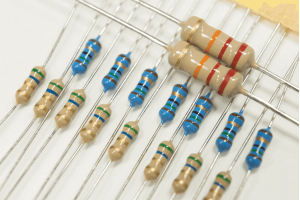
Comparing Carbon Film Resistors and Metal Film Resistors - Advantages and Disadvantages, Performance, Structure
on May 15th
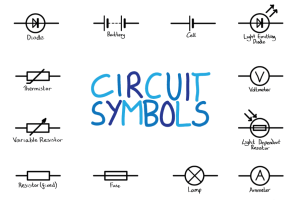
Mastering Schematic Symbols: A Guide to Electronic Circuit Design
on May 13th
Popular Posts
-

What is GND in the circuit?
on January 1th 3255
-

RJ-45 Connector Guide: RJ-45 Connector Color Codes, Wiring Schemes, R-J45 Applications, RJ-45 Datasheets
on January 1th 2805
-

Understanding Power Supply Voltages in Electronics VCC, VDD, VEE, VSS, and GND
on November 20th 2614
-

Fiber Connector Types: SC Vs LC And LC Vs MTP
on January 1th 2252
-

Comparison Between DB9 and RS232
on January 1th 1868
-

What Is An LR44 Battery?
Electricity, that ubiquitous force, quietly permeates every aspect of our daily lives, from trivial gadgets to life-threatening medical equipment, it plays a silent role. However, truly grasping this energy, especially how to store and efficiently output it, is no easy task. It is against this background that this article will focus on a type of coin cell battery that may seem insignificant on the...on January 1th 1836
-

Understanding the Fundamentals:Inductance Resistance, andCapacitance
In the intricate dance of electrical engineering, a trio of fundamental elements takes center stage: inductance, resistance, and capacitance. Each bears unique traits that dictate the dynamic rhythms of electronic circuits. Here, we embark on a journey to decipher the complexities of these components, to uncover their distinct roles and practical uses within the vast electrical orchestra. Inductan...on January 1th 1791
-

What Is RF and Why Do We Use It?
Radio Frequency (RF) technology is a key part of modern wireless communication, enabling data transmission over long distances without physical connections. This article delves into the basics of RF, explaining how electromagnetic radiation (EMR) makes RF communication possible. We will explore the principles of EMR, the creation and control of RF signals, and their wide-ranging uses. The article ...on January 1th 1781
-

CR2430 Battery Comprehensive Guide: Specifications, Applications and Comparison to CR2032 Batteries
What is CR2430 battery ?Benefits of CR2430 BatteriesNormCR2430 Battery ApplicationsCR2430 EquivalentCR2430 VS CR2032Battery CR2430 SizeWhat to look for when buying the CR2430 and equivalentsData Sheet PDFFrequently Asked Questions Batteries are the heart of small electronic devices. Among the many types available, coin cells play a crucial role, commonly found in calculators, remote controls, and ...on January 1th 1777
-

Comprehensive guide to hFE in transistors
Transistors are crucial components in modern electronic devices, enabling signal amplification and control. This article delves into the knowledge surrounding hFE, including how to select a transistor's hFE value, how to find hFE, and the gain of different types of transistors. Through our exploration of hFE, we gain a deeper understanding of how transistors work and their role in electronic circu...on November 20th 1765
